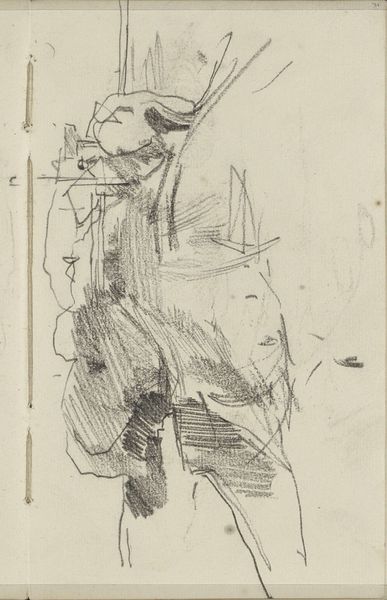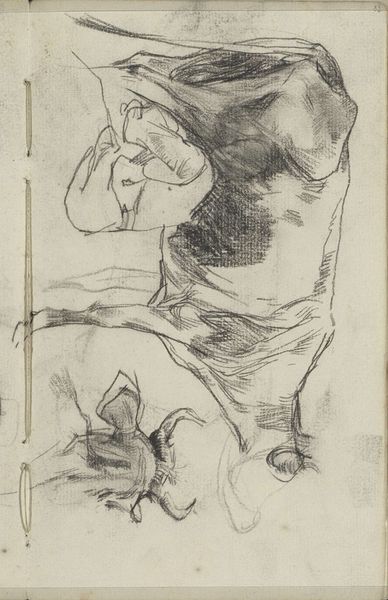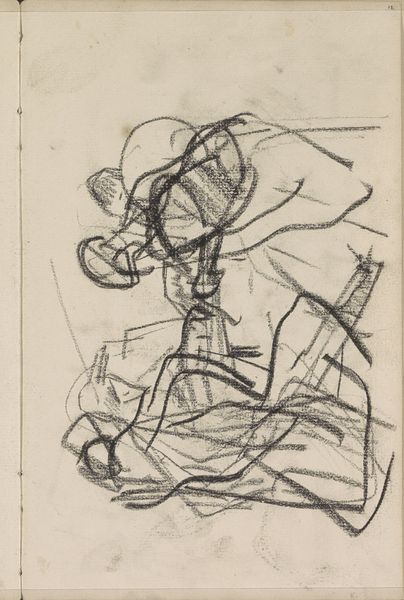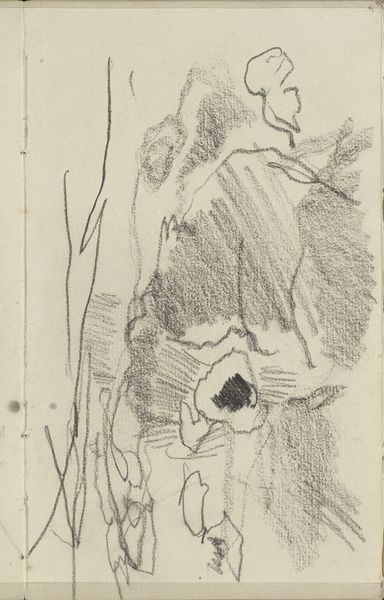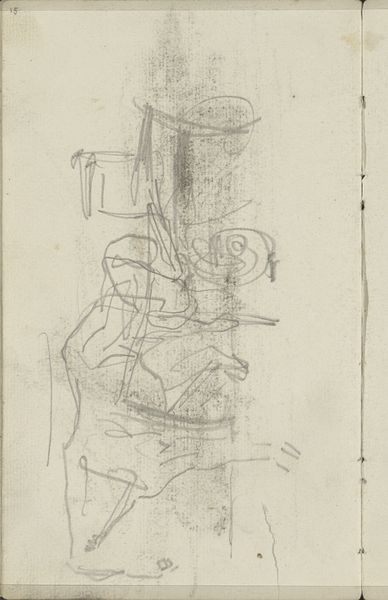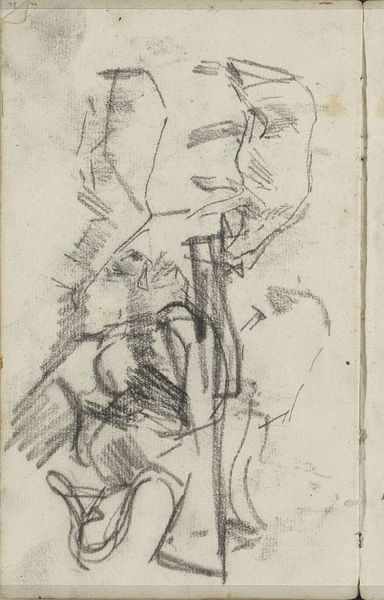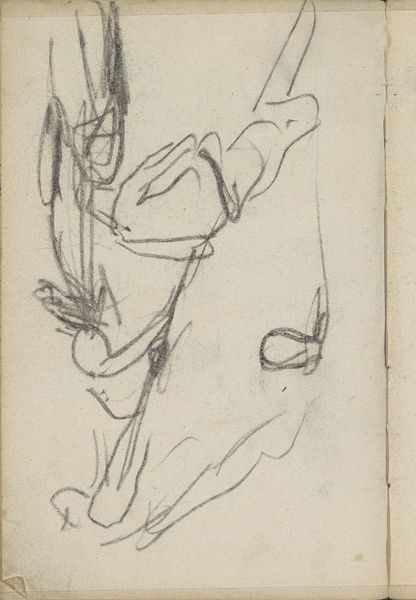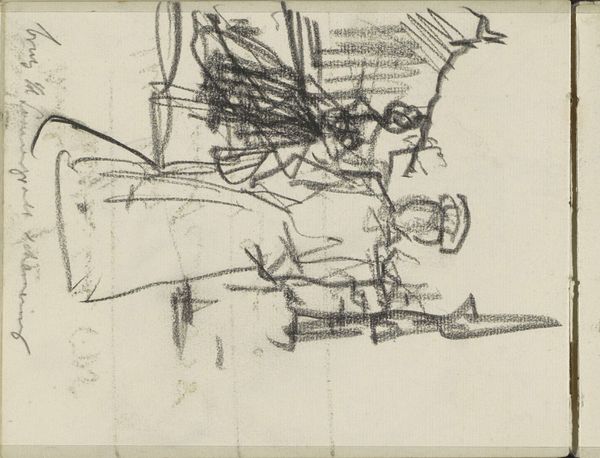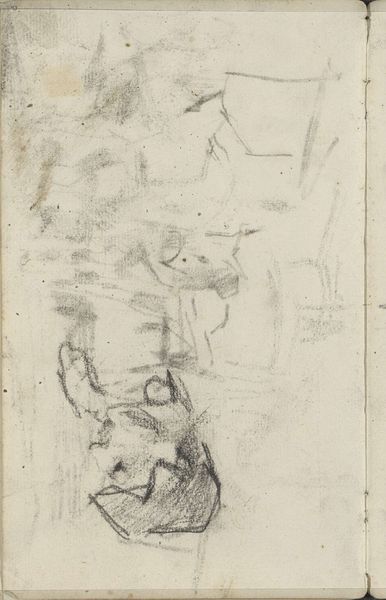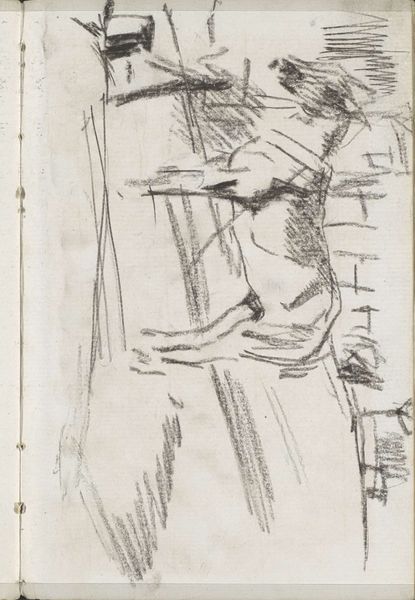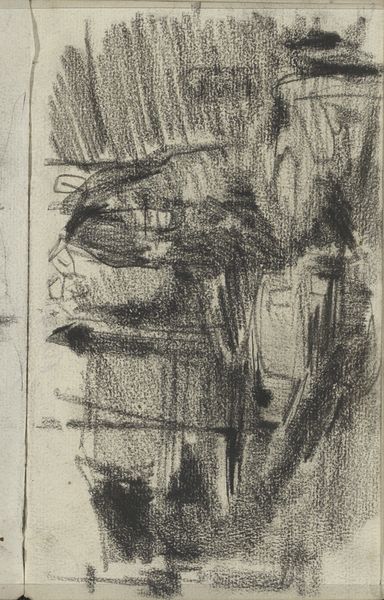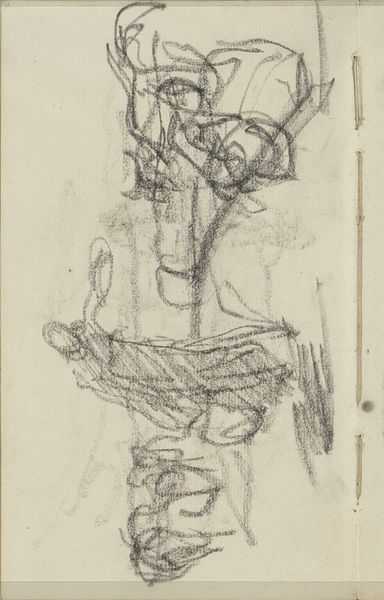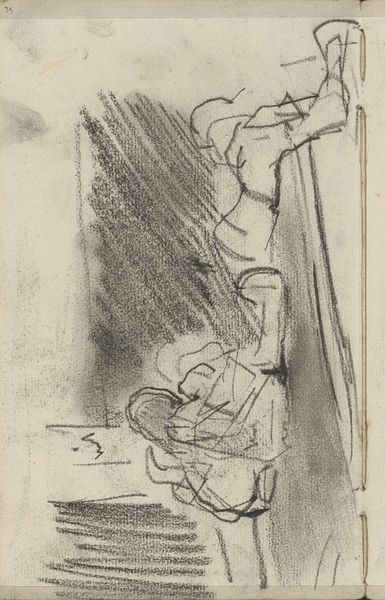
drawing, pencil, graphite
#
portrait
#
drawing
#
quirky sketch
#
impressionism
#
figuration
#
personal sketchbook
#
idea generation sketch
#
sketchwork
#
ink drawing experimentation
#
pen-ink sketch
#
pencil
#
graphite
#
sketchbook drawing
#
storyboard and sketchbook work
#
sketchbook art
#
initial sketch
Copyright: Rijks Museum: Open Domain
Curator: Looking at this sheet now displayed in the Rijksmuseum, we have what appears to be a page torn from one of George Hendrik Breitner’s sketchbooks, titled *Groep figuren,* which translates to ‘Group of Figures’ and was likely drawn between 1883 and 1886. Editor: There's an undeniable sense of urgency in this drawing, like a fleeting moment captured hastily. It's raw, almost unfinished, leaving a lot to the imagination. Curator: Indeed, and in that raw quality, we might find an insight into the visual culture of the period. Sketches like these give us access to the artist’s thought process, to how quickly observation translates to artistic interpretation in a pre-photographic age increasingly fascinated with realism. The sketch suggests Breitner's engagement with the dynamism of modern life, showing us, not a staged portrait, but figures caught in a moment. Editor: And I think the immediacy has a lasting emotional impact. Look at the way the lines create depth and shadow, almost conveying a psychological weight. I sense vulnerability, figures exposed in their ordinariness, lacking the idealization we might expect. Is it a conscious social commentary, or simply the artist’s stream of consciousness? Curator: It's a compelling question! We know that Breitner had a great interest in portraying ordinary people, particularly those living in the working-class districts of Amsterdam. The sketch might reflect that interest, revealing how urban life, previously invisible in painting, becomes a source of study and art. Remember too that such artworks helped constitute new social attitudes toward the representation of ordinary people. Editor: It brings up broader questions too, doesn’t it? What kind of art do we consider "finished", and how do sketches like these reshape our understanding of an artist's complete oeuvre? I see this work as essential to broadening the popular understanding of art. Curator: Absolutely, it prompts us to re-evaluate traditional artistic hierarchies. I’d also note how Breitner is memorializing a historical record here, the look of the period clothing, hats, hairstyles, the gestures of public behavior – details which tell stories. Editor: It's a potent reminder that even seemingly minor works can reveal profound truths. I appreciate that Breitner gives the quotidian its due significance. Curator: Yes, these sketchbook glimpses bring us closer to Breitner, and his world. Editor: And leave us to ponder the rich histories held within seemingly simple lines.
Comments
No comments
Be the first to comment and join the conversation on the ultimate creative platform.
